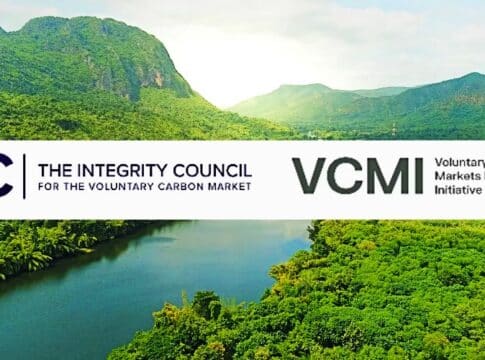Pachama Launches Its Updated Evaluation Criteria Version 2.1
A climate tech startup Pachama launched its updated version Evaluation Criteria 2.1, marking the official implementation of its Dynamic Control Area Baseline technology.
Pachama is using AI and satellite data to help improve the integrity of carbon markets. Over the past three years, the carbon credit company has evaluated 150+ projects certified by the world’s biggest carbon registries.
Pachama’s Updated Evaluation Criteria 2.1
Pachama’s updated version of its project evaluation criteria is the first ever AI-based tool for evaluating forest projects. It was first launched last year with the goal to improve the quality of forest carbon credits.
Though there are different tools for measuring dynamic baselines available right now, Pachama’s technology is the first in the industry that actually will be put in use. This is a significant milestone in various efforts to bring more transparency and integrity in the voluntary carbon market.
The launch of the 2.1 version is important in helping companies decide on their carbon credit investments. The criteria cover quality checks that each project must meet. Project developers must be able to address these four questions:
Is the climate benefit net additional?
Is the climate benefit based on conservative claims?
Is the climate benefit durable?
Are there impacts beyond carbon?
Additional:
A project’s net additional climate benefit refers to the emissions avoided through deforestation or removed by reforestation. Pachama calculates it using this equation:
Additional climate benefit = Baseline emissions – Project emissions – Leakage emissions
As represented in the formula, projects must have baseline emissions that are conservative and not too much so as not to overstate their climate impact. The same goes for project emissions; they must not be underreported. Otherwise, the additional climate benefit would be more than what really happened.
Conservative:
This is where Pachama’s new technology particularly applies to ensure conservative baseline claims. The company is using these concepts to ensure projects have conservative baseline emissions accounting.
Accounting for baseline is critical because carbon credits are issued based on the difference between baseline and project emissions.
A baseline is a business-as-usual scenario used to determine expected emissions without the project.
Dynamic Control Area Baseline Results
The image below shows the project area in white and the control area in blue. Pachama observes forest loss in the control area using remote sensing data. They then compare it with what they’ve observed with the project reported.
In other words, Pachama calculates project carbon emissions with this formula:
Observed deforestation (hectares) x Carbon inventory (tCO2e/hectare) = Project Emissions (tCO2e)
The chart below shows the company’s dynamic baseline emissions and the associated confidence band relative to project-reported baseline emissions.
Source: Pachama
Also, crucial to ensuring the quality of carbon credits is considering the issue of leakage. Applying this to forest projects, “carbon credits must represent real emissions reductions and not just a shift of deforestation.” Pachama uses leakage calculations from registry-verified project documents.
Durability:
Durability, also known as permanence, refers to a project’s lasting climate impact.
Carbon credits are considered durable if their climate benefits last for at least 100 years. Pachama continues to monitor this by checking the project even after the crediting period through its monitoring technology.
Beyond Carbon:
Forest carbon projects are sought-after climate solutions because of the other benefits they provide apart from reducing carbon emissions. These include job creation, wildlife species protection, and benefits to local communities. Others refer to them as co-benefits.
Pachama employs a series of checks to see to it that a project delivers those societal and environmental benefits.
Launching the Dynamic Control Area Baseline offers great significance over the status quo for four major reasons, says Pachama.
The determination of baseline doesn’t depend on human assumptions and calculations but uses the power of algorithms.
Carbon emissions aren’t projected using historical trends but are produced using satellite data.
It doesn’t assume that baseline perfectly represents the project; rather it factors in uncertainties in baseline scenario selection.
Interactive tools are available that communicate those variables in simple terms to companies for them to easily understand project performance.
The improved criteria will ensure that Pachama continues to promote high-impact projects while enabling companies access data to inform their carbon credit investment decisions.
The post Pachama Launches Its Updated Evaluation Criteria Version 2.1 appeared first on Carbon Credits.



